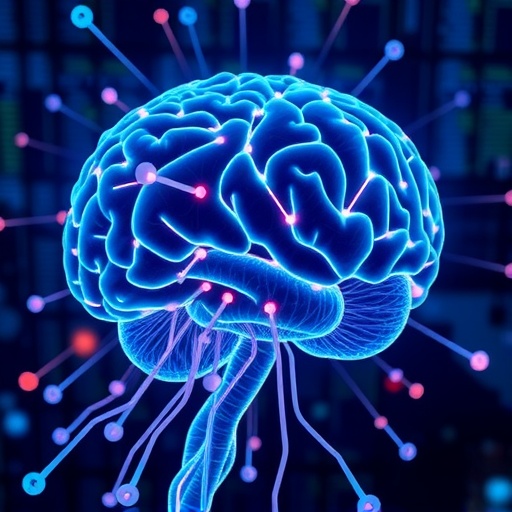The TReNDS Center at Georgia State University is rapidly positioning itself at the cutting edge of brain research, having recently secured two highly competitive R01 grants from the National Institutes of Health (NIH). These awards empower the center to push forward pioneering research in both Alzheimer’s disease progression and innovative multimodal brain imaging techniques to better understand neuropsychiatric disorders. This milestone underscores a significant leap in the center’s trajectory under the visionary leadership of its founding director, Dr. Vince Calhoun, whose contributions to neuroinformatics and brain mapping have garnered international acclaim.
The NIH R01 grants represent one of the most prestigious funding mechanisms available to independent investigators, enabling them to pursue ambitious and novel scientific inquiries. Dr. Calhoun, a Georgia Research Alliance Eminent Scholar in Neuroscience and Neuroinformatics, leads the tri-institutional Center for Translational Research in Neuroimaging and Data Science (TReNDS). This hub is uniquely poised to harness computational power and innovative data integration strategies, merging neuroimaging and genomics to unlock the intricate mechanisms driving brain disorders.
The dual projects funded through these grants are unified by their focus on advancing methodologies that integrate complex, multimodal data sets. By synthesizing diverse sources of brain imaging and genetic information, researchers aim to decode the labyrinthine biological underpinnings of conditions like Alzheimer’s disease and psychiatric illnesses. Such integrative approaches aspire to revolutionize diagnosis, prognosis, and therapeutic interventions, moving beyond traditional siloed research paradigms.
The first grant, a five-year award totaling $3.8 million from the National Institute on Aging, prioritizes the development of flexible, multidimensional computational models. These models are designed to map the temporal progression and heterogeneity of neurodegenerative diseases, particularly Alzheimer’s, through combined neuroimaging and genomic data analysis. This approach enables the capture of dynamic biological changes over time, offering unprecedented granularity in understanding disease trajectories.
Dr. Jean Liu, Associate Professor of Computer Science at Georgia State and co-principal investigator on this project, emphasizes the transformative potential of this research. She explains that integrating behavioral data, genetic profiles, and neuroimaging phenotypes can sharpen predictive accuracy, allowing for earlier and more precise identification of dementia subtypes. This multilayered data fusion promises to unravel the causal cascades underlying cognitive decline, fostering the development of targeted interventions.
A critical challenge in Alzheimer’s research has been the early detection and classification of disease variants before irreversible brain damage occurs. While significant progress has been made in characterizing pathological markers such as tau and amyloid plaques, prognostic precision remains elusive. The proposed models aspire to breach this gap by capturing the nuanced interplay between genetics, brain structure, and functional alterations that precede clinical symptoms.
The second NIH grant, a $2.5 million, four-year award from the National Institute of Biomedical Imaging and Bioengineering (NIBIB), concentrates on innovating artificial intelligence-driven source separation techniques. These computational tools aim to isolate and identify multimodal brain imaging biomarkers that can more accurately classify psychiatric disorders based on underlying biological dimensions, rather than symptom-based categories. This data-driven classification aligns with the emergent precision medicine paradigm in psychiatry.
Dr. Calhoun elaborates on the significance of this project, highlighting the advancement of algorithms capable of finely mapping both spatial and temporal brain changes. Such tools enhance the capacity to visualize where and when pathophysiological processes disrupt brain volume, connectivity, and circuitry, thereby linking these alterations to genomic influences. This approach not only deepens mechanistic insight but also moves towards clinically actionable biomarkers for complex brain disorders.
Beyond grant-based research, Dr. Calhoun recently contributed to the “State of the Brain” special issue in the journal Aperture Neuro, offering forward-looking perspectives on brain mapping trends. His insights underscore the critical importance of maintaining the richness of high-dimensional brain data throughout analytical processes. He critiques the premature simplification that obscures vital information and advocates for hybrid models combining data-driven and hypothesis-driven techniques.
One such innovation highlighted by Calhoun is NeuroMark, an automated, adaptive computational pipeline that identifies reproducible functional magnetic resonance imaging (fMRI) markers. By improving the reliability and interpretability of brain disorder signatures, NeuroMark represents a significant step toward standardized biomarker discovery and validation across diverse populations and datasets.
Calhoun’s vision also emphasizes the indispensable role of advanced visualization techniques and modeling of time-varying connectivity to capture the dynamic nature of brain networks. These methodologies are crucial for elucidating how neurological and psychiatric disorders manifest not as static anomalies but as evolving disruptions in brain function and architecture.
The impact of Dr. Calhoun’s work was recently recognized through the prestigious Glass Brain Lifetime Achievement Award from the Organization for Human Brain Mapping (OHBM). This honor celebrates a career dedicated to advancing the understanding of the human brain through innovative neuroimaging and computational neuroinformatics, cementing his role as a leader in the field.
In support of collaborative efforts, the TReNDS Center, together with Georgia Tech and Emory University, plans to host a Functional Neuroimaging Symposium. This event aims to convene leading neuroscientists to discuss recent breakthroughs and future directions in brain imaging technologies. It will foster interdisciplinary dialogue critical for translating computational advancements into clinical and research applications.
With these strategic initiatives and robust funding, the TReNDS Center is spearheading a transformative era in brain research. By integrating state-of-the-art imaging, genomics, and artificial intelligence, it is forging new pathways to unravel the complex biology underlying devastating brain disorders. The ultimate goal is to shift the paradigm from descriptive diagnosis to mechanistic understanding and precision intervention, benefiting patients and families worldwide.
Subject of Research:
Research on advancing multimodal brain imaging and computational modeling to improve understanding, diagnosis, and treatment of Alzheimer’s disease and neuropsychiatric disorders.
Article Title:
From Alzheimer’s to AI: How the TReNDS Center at Georgia State Is Advancing Brain Research
News Publication Date:
June 2024
Web References:
https://trendscenter.org/
https://apertureneuro.org/issue/12560
https://news.gsu.edu/2024/06/24/trends-center-founder-receives-lifetime-achievement-award-for-contributions-to-understanding-the-brain/
Image Credits:
Courtesy: Georgia State University
Keywords:
Alzheimer’s disease, neuroimaging, multimodal data fusion, brain mapping, neuroinformatics, artificial intelligence, psychiatric disorders, NIH R01 grants, genomics, brain biomarkers, functional MRI, computational neuroscience




